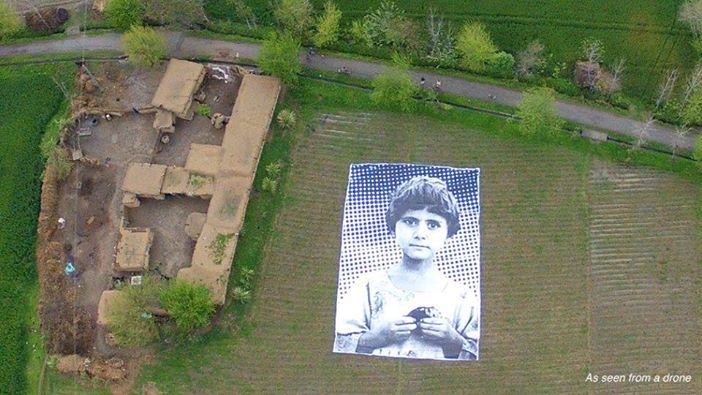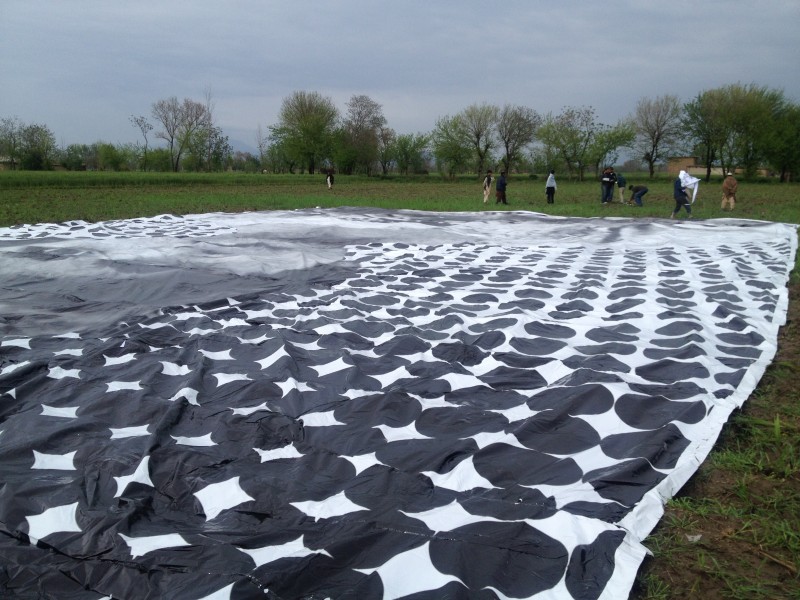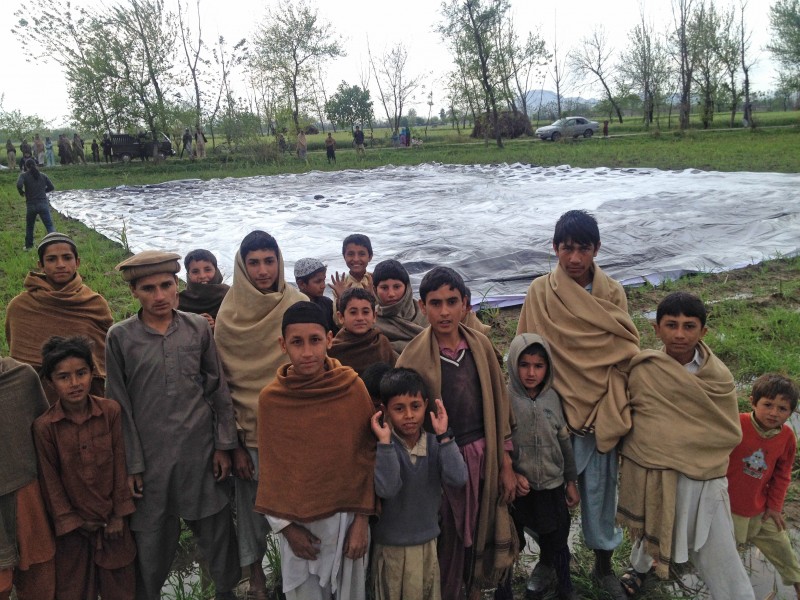With the help of locals, an artists collective associated with an anti-drone campaign, installed a massive poster of a drone survivor in the fields of the Khyber Pakhtunkhwa, a province that borders Waziristan, the tribal areas where US predator drones have been hovering over since 2004.
The initiative aims to give civilian casualties in US drones attacks a human face. According to the Bureau of Investigative Journalism, since 2004, more than 380 drones have targeted Pakistan, killing at least 3500 people, 200 of whom were children.
The US drone campaign aims to eliminate Taliban strongholds in Pakistan. The previous Pakistani government openly condemned US drone attacks but Wiki-leaks exposed that they privately approved the strikes. In May 2013, a Pakistani court ruled that CIA drone strikes in Pakistan were illegal.
The image above has been shared widely on Twitter with the hashtag #NotABugSplat, which is the campaign's name. From their website:
In military slang, Predator drone operators often refer to kills as ‘bug splats’, since viewing the body through a grainy video image gives the sense of an insect being crushed.
To challenge this insensitivity as well as raise awareness of civilian casualties, an artist collective installed a massive portrait facing up in the heavily bombed Khyber Pukhtoonkhwa region of Pakistan, where drone attacks regularly occur. Now, when viewed by a drone camera, what an operator sees on his screen is not an anonymous dot on the landscape, but an innocent child victim’s face.
The website says the child “in the poster is nameless.” The Foundation for Fundamental Rights, one of the Pakistani non-profits associated with the campaign, says she lost both her parents and two younger siblings in a drone attack.
But a Twitter user seems to have matched the girl's face to a photo of drone victims from 2009:
Think this is original of the photo used in Pakistan's #NotABugSplat campaign against drones http://t.co/ui2t2KVrUo pic.twitter.com/ATuhiYYwLL
— David Steven (@davidsteven) April 6, 2014
Zahra Ahmer comments on the campaign's website:
This is a beautiful post and the girl in the photo is so innocent, so pure and the way these drones have harmed her…its scary for me to these read comments which express empathy for the children but say using these machines is necessary. I mean, it is so ingrained in your brains that this is the ONLY means to fight the Taliban. Do you actually think so? Do you actually think that with all our technology and all our creativity, this is all we can come up with? It might be the easiest. But really, the only one? Well, I’d like to ask, would you like a government to hunt down criminals in this way among you? Especially a foreign government?
Any way of hunting down terrorists in a way that puts innocent people’s lives at risk should not be used. Instead a better method should be thought about and brought to actuality. It might be easier for you to accept this girl’s fate, living comfortably in your homes, but actually for a moment try to imagine her reality and her memories and the environment she will be living in. And please, really think about it and then say, drones are necessary.
John Uebersax writes:
This is an excellent idea. Opposing military aggression with anger and hatred fuels continued aggression. It is better to appeal to conscience, so that the aggressor wakes up and realizes “What we are doing is wrong.”
Drone advocates argue that precision strikes like drones lead to less casualties. But there is debate regarding the number of civilian and militant casualties from these attacks. Since the US defines all military age men as “enemy combatants” their number of casualties, vary largely from independent organizations documenting drone deaths. According to Amnesty International a number of drone victims were unarmed and that some strikes could amount to war crimes. An International Crisis Group report concluded that “drone strikes were an “ineffective” way of combating militants in Pakistan”.
There have been no drone attacks in Pakistan the last 100 days; this is the longest break since 2011. The Washington Post reported that the US cut back on drone strikes after the Pakistani government asked for restraint while it seeks peace talks with the Pakistani Taliban.










1 comment